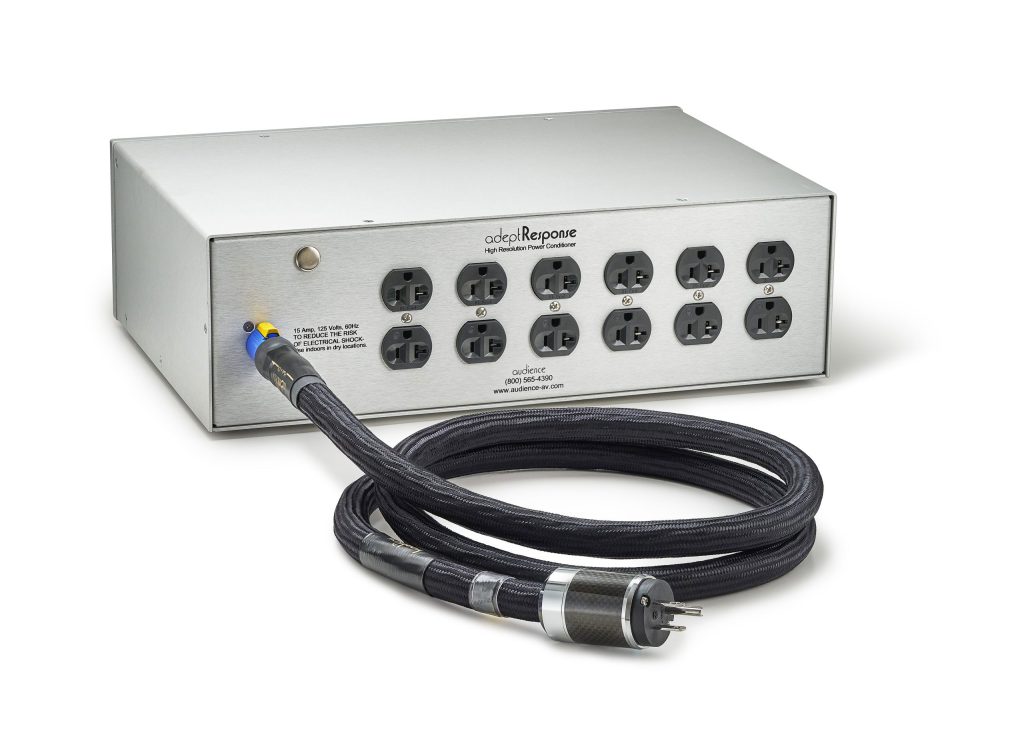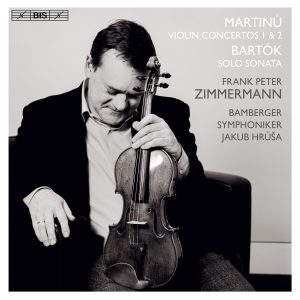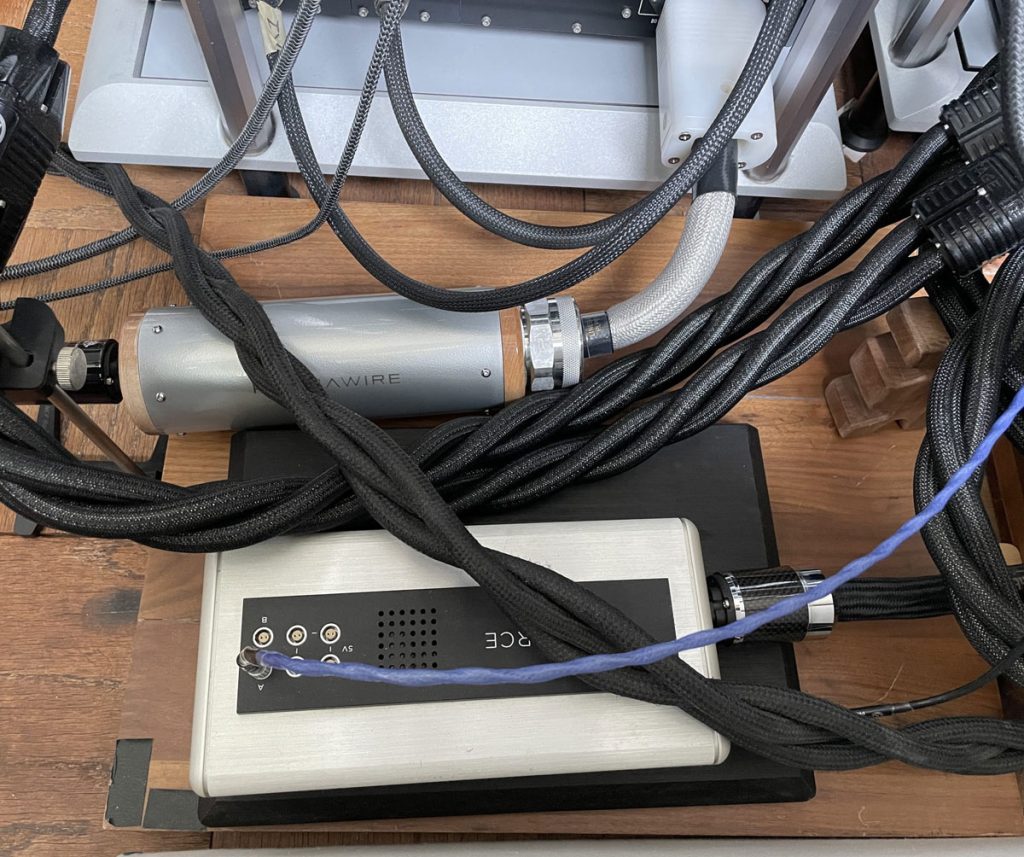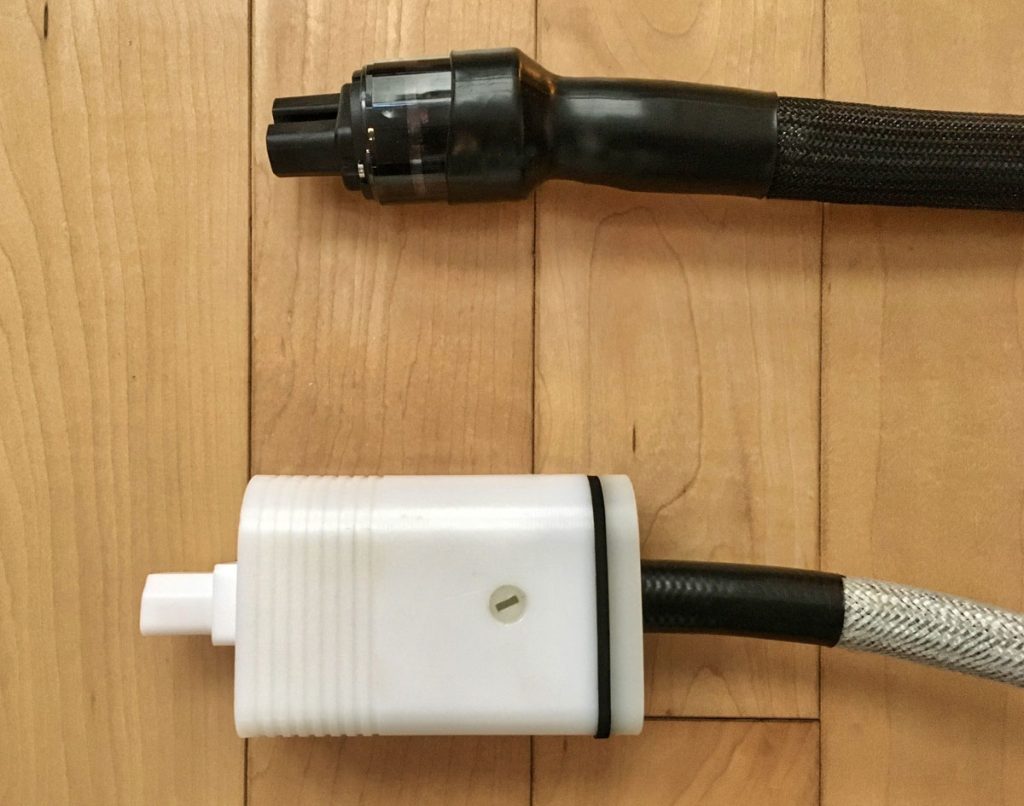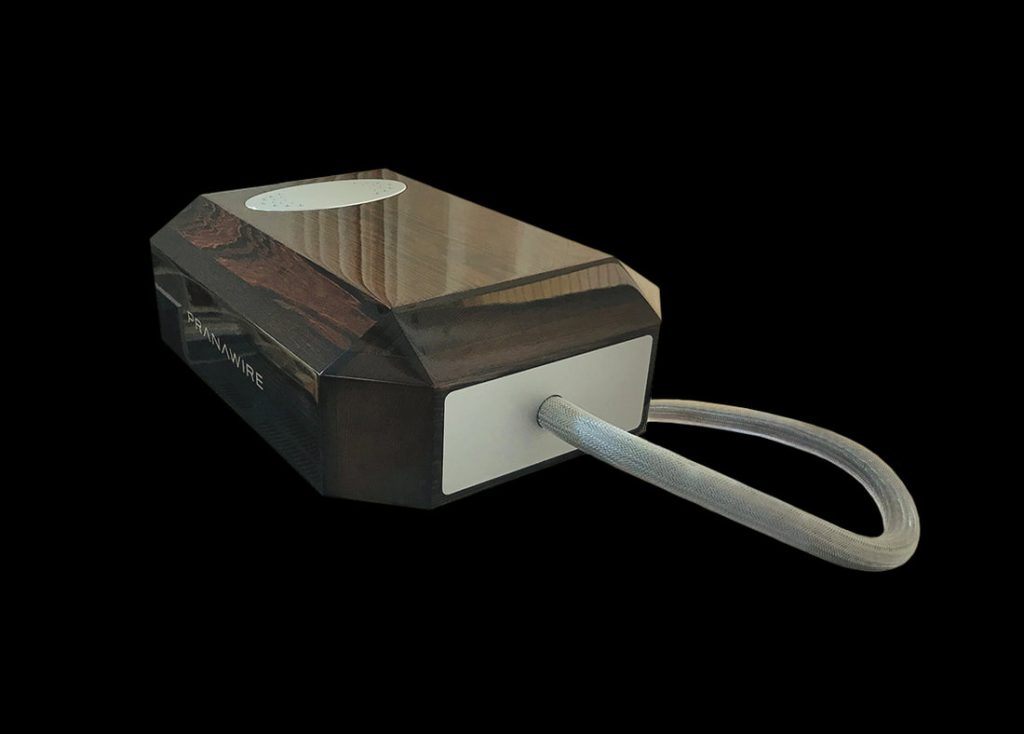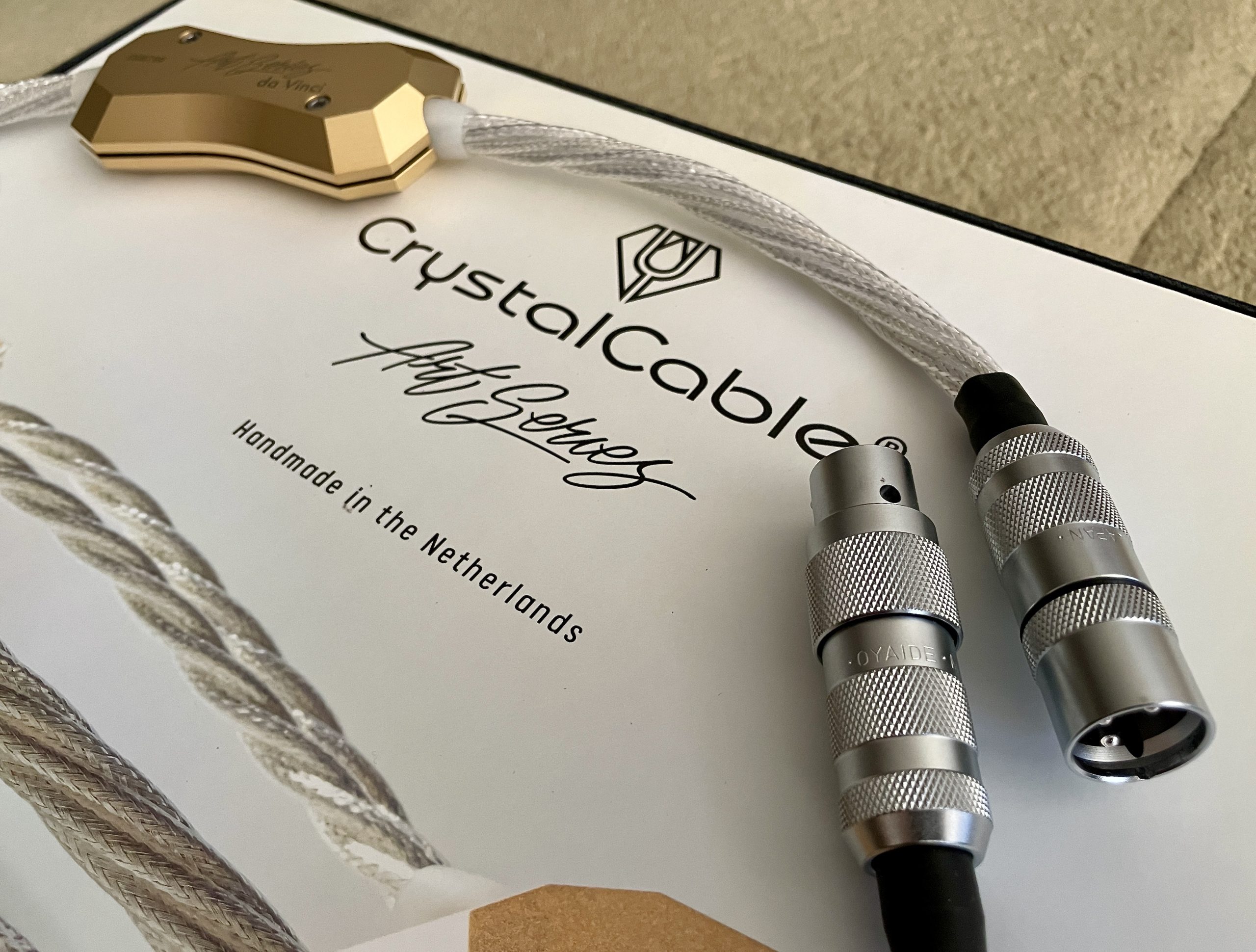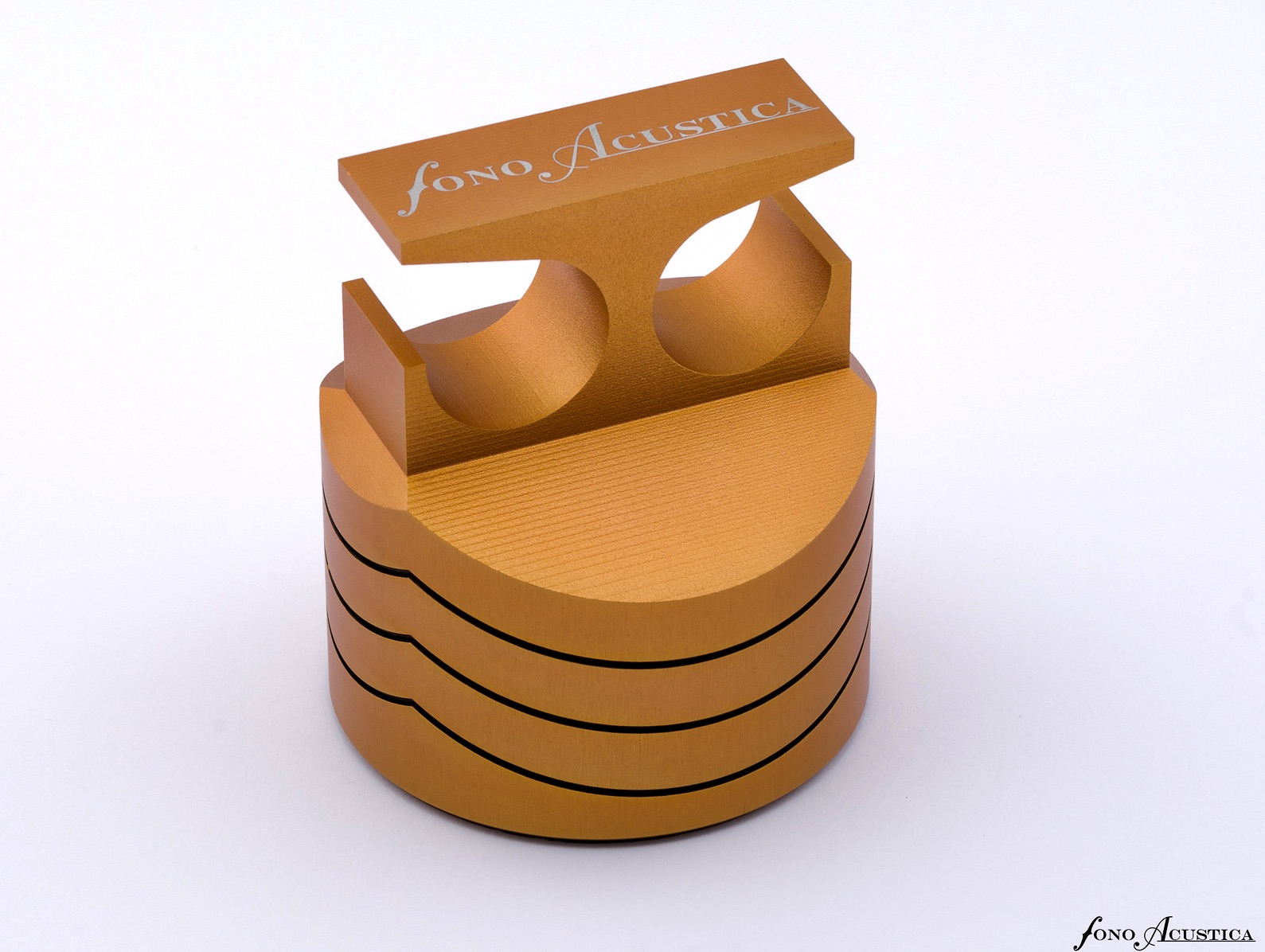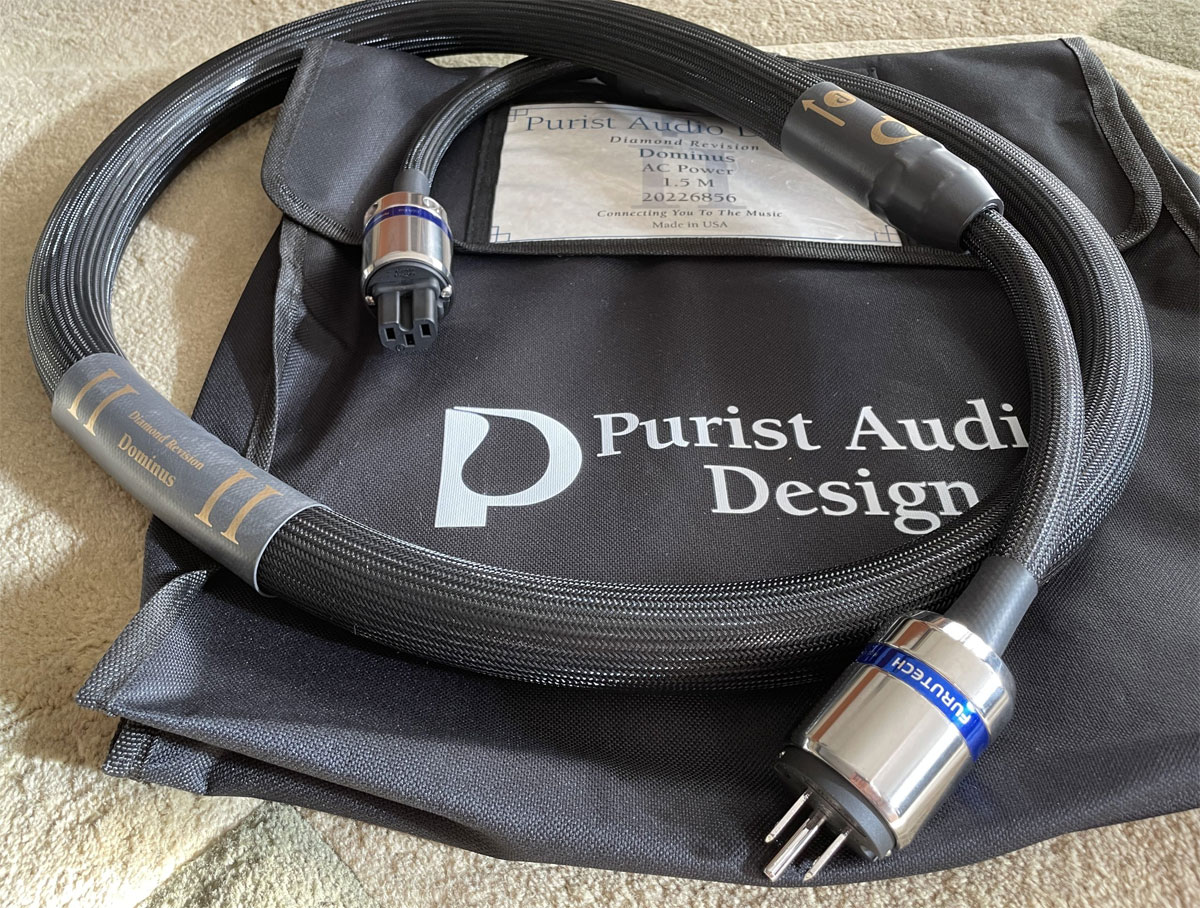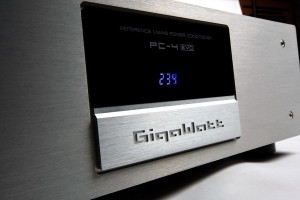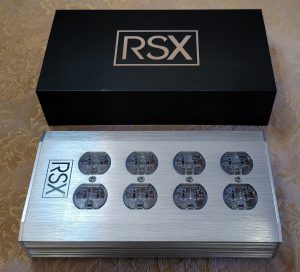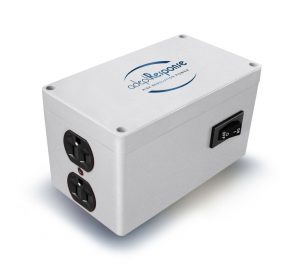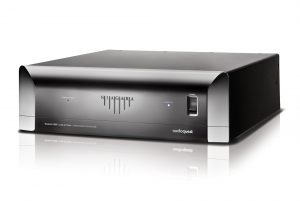When is enough, enough? That's a rhetorical question when posed to an audiophile, because in matters of the hi-end, we never cross the finish line. Just ask Joe Cohen, the proprietor and lead designer of PranaWire, for his take on the subject: "Common wisdom holds that there is a point beyond which continued effort and expenditure begins to yield less and less…I hold the reverse to be true. As the system becomes more and more resolving, it yields ever-greater gains with ever-smaller upgrades…" He calls this "The Myth of Diminishing Returns." I happen to agree with him—unless, of course, your efforts result in the opposite outcome. How often have you chased a minor issue down the rabbit hole, not realizing that with every additional effort and expense the big picture heads further south?
The Audience adeptResponse aR12-T4
Not long ago I embarked on an AC power overhaul, outlaying significant sums for a pair of Audience adeptResponse conditioners (HERE) and some new power cords. I count 14 power cords now in use and none with an MSRP less than $6700/2m. Think about that for a moment. Additionally, all components are connected to ground noise reduction devices from Nordost, and the QKORE chassis are supported by Sort Kone feet with a Marigo Audio Lab Isolation Platform under that. The adeptResponse conditioners are also on Marigo Platforms. The result is the best AC power delivery I have attained and figured I was done (for now). For these reasons, spending time with the Linebacker Power Filter from PranaWire wasn't initially an enticing prospect.
Ah, but my assumptions were not correct. A careful reading of the product description revealed an emphasis on exotic, unconventional features. The Linebacker contains something called a Super Enhanced Ground Plane (SEGP) that absorbs noise from the ground plane of components using a "…multi-layer noise-cancelling construction formulation." From what I can tell, this bears similarities to the Nordost QKORE and similar products from Synergistic and Entreq.
Second, Joe described the Linebacker as a pure passive design, except there is a capacitor inside. The cap is connected to the AC ground, so it doesn't have current running through it. One can only speculate what it does; this is not orthodox circuit engineering. Yet, if you change the brand, or remove it, Joe claims it somehow makes an audible difference. In short, the Linebacker design incorporates principles and solutions that have little in common with the Audience adeptResponse.
Placement Options
The third reason is placement in the AC path. The Linebacker has a male IEC plug at one end to receive your power cord and a captive PranaWire PC at the other end with a female IEC plug (it powers a single component). It can replace your existing conditioner: Alternately, you could put it in front of your conditioner, in series. While either of these will be beneficial, the designer says it's most effective when connected after your existing conditioner as a chaser, or follower unit. The concept seemed a little far-fetched, but Joe was emphatic that with "a single Linebacker placed in a system, the resulting improvement in clarity and freedom from subtle and not so subtle distortion is on a very high order of magnitude."
The more I pondered the possibility for a cumulative conditioning effect, the more forcefully the Linebacker beckoned. I'm an acolyte of the Myth of Diminishing Returns. My intuition was signaling that I was about to go down the rabbit hole.
Installation
The Linebacker SE Copper is a short, hefty, cylindrical chassis without footers. There's no top or bottom. It weighs 6 lbs, enough that it needs to be supported and can't hang freely in space. It's best to place it on a shelf or the floor and orient it to make the IEC power cable connections. The standard 9" Cosmos power cord umbilical is short and fairly stiff, further limiting placement options.
The Linebacker received an AudioQuest Dragon PC from the Audience conditioner and was positioned on the floor close enough and with the right orientation to access to my CH Precision X1 External Power Supply, a power supply upgrade for CH front-end components connected to my L1 Preamp and D1 Transport. (The X1 comes with a single Power Output for $17,000 and can be fitted with a second Power Output for another $3500.)
The Martinů Violin Concerto No. 2 is an outstanding mid-twentieth century composition with a deep inventory of recordings. One of the top contenders features violinist Frank Peter Zimmermann, who always brings something worthwhile, and conductor Jakub Hrůša, someone I follow keenly. This BIS SACD has glorious sound. In the second movement of the concerto, marked andante moderato, the orchestra begins quietly at a relaxed walking tempo, imparting a pervasive calm over the proceedings. Zimmermann enters with a lilting melody and delicious string tone, a tad sweeter than I'm used to. The soloist and the orchestra pass the theme back and forth, maintaining a steady piano level with no wide dynamic swings. Occasionally the double basses interject a punctuation mark—a brief emphasis not meant to startle or distract. But, I admit I was mildly distracted (and impressed), because I sensed control and power held in reserve.
Enormous Grip with no Tightness
The gloves are taken off as the low-end artillery is called up in force in the final movement of the concerto, and the pugilist is revealed to be in the heavy-weight class. Low-frequency blows land with several degrees more potency than previously, and they are broad-based, coming from a large section of the stage, not tidy miniatures. Then, just like that, the stage is wiped clean and the violin returns with the lilting, sweet melody. The musical interplay between soloist and orchestra is executed to a fare-thee-well. In my rig, the Linebacker brought a welcome dose of extra oomph in the bass and did it the right way—without being overly tight or taking energy away from the treble.
Did I mention there is not a shred of irritation? Macro dynamics are outstanding, really wide ranging and delivered with little apparent effort. As piano navigates to forte there's no change in sound quality, the only difference is the loudness. This is hi-end without listener fatigue.
The Fine Details
The best gear I've sampled lately is doing things unheard of ten years ago. For example, we've been lauding precision in soundstaging for quite a while, where the instruments occupy fixed coordinates and don't amble about. This is always impressive; however, too often it has been accompanied by a rigidity or stiffness that makes the images seem unnatural. Precision delivered with tightness comes across as an artifact.
Today's top products get rid of the tightness. I think of it as analogous to dialing down the contrast knob on a video display and softening the edge contrast, making the demarcation between image and surround less sharply defined. And just as they fiddle with the contrast knob, these products tweak the signal to noise ratio. Whether you call it noise or artifact, there ain't none. Meanwhile, the resolution dial goes up…and up.
This adjustment was especially apparent in Zimmermann's solos. The Linebacker plunged deeply and dredged up a previously unheard layer of ultra-fine details and dynamic gradations, allowing me to follow the violin's line with unaccustomed ease. That made my ears happy. With a recording of this quality and the Linebacker placed after my Audience adeptResponse, the listening experience elevated to the point we were totally engaged. This scenario was repeating a lot now.
Burn-In
The Linebacker had burned-in on the audiodharma Cable Cooker (HERE) for five days before shipping, and Joe advised I put it right into the system. At first it was dark, with too much bass and reticent top-end, plus the soundstage was very smooth and soft. Macro dynamics impressed, but many of the flashy things that audio systems do well were toned down. Over the course of a week the frequency response linearized and most of the softness dissipated. Still, it was less flashy. When I asked Lynn what she thought about that, without hesitation, she said the things I'm missing are essentially artifacts that you wouldn't hear at a concert. The Linebacker was simply, and supremely, natural sounding.
The Linebacker doesn't look like other power conditioners
Prepare to be shocked when you first gaze upon the SE Copper model. It's not that large, but each part is over-built to the point of requiring a prolonged stare to let it sink in. As Joe says, "The Linebacker is not audio jewelry; it's more industrial looking, like a product of the machine age." I would edit that to be the heavy industry division of the machine age.
Design and Features
The SE Copper I was sent has a male Furutech IEC plug at one end to receive your power cord and a 9" captive PranaWire Cosmos Copper PC on the other end to plug into your component's IEC. You can see from the photo the Linebacker chassis has about the same footprint as the Nordost QSOURCE Linear Power Supply. The outer skin is made of 3mm solid copper.
Bocchino IEC vs. Standard IEC
The Cosmos Copper power cord is so large it limits the choice of connectors. The Bocchino IEC connector handles it, but it is also ridiculously massive (and expensive).
Features of the SE Copper Model
- Cosmos Power Pure Copper Power Cable, multiple layered design with 7 gauge conductors and ground wires
- Bocchino Santa Maria IEC Female Cable Mount Connector
- Furutech FI-09 NCF IEC Chassis Mount Male Receptacle
- Multi-Layered Pure Silver Super Enhanced Ground Plane with Pure Silver Wire
- Audio Note Copper Tuning Capacitor
Laboratory Tests
You can view before and after laboratory measurements on the Lotus Group website that show how the Linebacker targets (and removes) spikes in the ultra-high frequency range of 45-80 Megahertz. This is well beyond the audible frequency range and, according to PranaWire, contains artifactual content—noise that can interfere with the component's processing of the actual signal.
The Nirvana Linebacker
The Lineup
Linebackers are handmade to order and available in a range of models. The entry level is the GP Copper for $4250. The SE Copper under review costs $7500, roughly the same as the Audience adeptResponse aR6-T4 conditioner (or a 2m frontRow power cord). As you move beyond the SE Copper to the Sovereign and finally the Nirvana, they get bigger and the machine age is replaced by a luxurious, expensive aesthetic. Each level sports upgraded parts: a larger SEGP; better quality capacitor; higher model power cord umbilical.
The standard length of the umbilical for the SE Copper model is 9" which I found restricted placement options. Consider ordering a longer length. Also, the umbilical can be upgraded to a Cosmos Silver Power Cable. (These options are at additional cost.)
Conclusion
When an industry acquaintance recommended the Linebacker Passive Power Filters from PranaWire, I was initially skeptical. First, the device has only one outlet—it only powers one component. Secondly, would it be redundant with my current conditioner, the Audience adeptResponse? Thirdly, I was concerned about voicing. PranaWire has been around a long time, but I was not up to date as to their "house sound." The product's conceptual basis struck me as a little far-fetched.
The Linebacker SE Copper summarily dismissed the voicing concerns. It is well-balanced, very full-bodied, with an acoustic sound that is a little less flashy than many power conditioner brands. It was simply natural and very easy on the ear. Regarding the redundancy, careful reading of the Linebacker description revealed many unconventional features and so there was little overlap with the Audience adeptResponse. And about the single outlet, the Linebacker is intended to be connected in series as a chaser, or follower unit, after your existing conditioner, according to the designer. Seen in this light, the possibility of a summing of conditioning effects opened up—and that's what happened.
Progress in the audio arts moves in fits and starts. There's nothing new for a long period, then we're blitzed with rapid advances. I see this happening right now focused on the unexpected contribution of the electrical ground. The best of the new gear optimizes the signal to noise ratio in a way that reduces the noise level even as it turns up the resolution dial. The Linebacker, when placed in tandem after my Audience adeptResponse, brought new heights of purity and amazingly detailed sonic vistas. One other area must be mentioned: the Linebacker's bass authority was simply outstanding.
Is the Linebacker worth it? Unequivocally, for those playing at the further reaches of the hi-end. Buy the model that's best suited to your system. The SE Copper suits mine fine and will become resident in the reference system. A lesser model would be a weak link, while a more expensive one might not see its cost actualized.
Final note: While the Linebacker will improve the sound of everything you play, make sure to audition it with familiar reference recordings to exploit its full potential. Prepare to be stunned.
PranaWire Linebacker SE Copper Passive Power Filter
Retail: 15 amp version $7500, 20 amp version $7950. Additional .5m Cosmos Copper Cable $1475
Other models are available starting at $4250
The Lotus Group
Novato, CA





